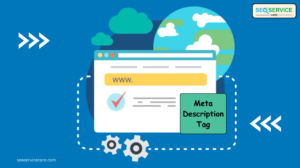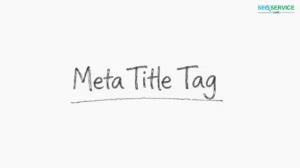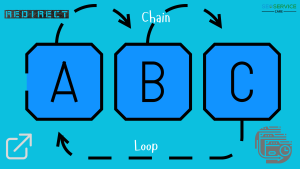Are you interested in improving a website’s rankings on Search Engine Results Pages (SERPs)? Understanding how external links work for SEO is very important. External links refer to hyperlinks that connect domains, thus acting as building blocks of the World Wide Web environment. In this comprehensive guide, one will learn what external links are all about, their importance to a site owner, and how they can be effectively used to boost your SEO strategy.
What is an External Link?
An external link is a hyperlink that takes users from one website to another domain. These links connect your content with other websites, providing additional reference points and enhancing the context of your work.
Furthermore, external links build credibility and SEO by associating your site with expert sources and helping search engines understand how relevant and valuable your content is.
External Links Examples
Examples of external links include hyperlinks in your blog posts that lead to reputable sources, such as linking to a scientific study from a research institution, a news article from a recognized media outlet, or an industry report from a trusted organization.
External links can also include references to influential blogs, Wikipedia pages, or authoritative websites like government or educational institutions. Consequently, these links provide more context and credibility, enhancing your content and leading readers to valuable and relevant external resources.
Different Types of External Links
Outbound links include:
-
Backlinks from different sites to yours.
-
Outbound links from your site to another domain.
-
Affiliate links promoting a product or service.
These links enhance SEO and credibility and provide more resources for users. Here are the outbound link types:
-
Dofollow Links: These regular hyperlinks allow search engines to follow them and pass authority to the linked page. They improve SEO by increasing a linked page’s ranking potential and credibility.
-
Nofollow Links: These contain an HTML attribute that signals search engines not to follow the link or pass any authority. They are often used for untrusted content or paid advertisements so as to avoid SEO manipulation.
-
Sponsored and UGC Links: Sponsored links are bought hyperlinks that should be marked so search engines can know what they are. UGC (User-Generated Content) links found in comments or forums also need proper labeling so they don’t get mixed up with editorial content, resulting in possible SEO problems.
Importance of External Links
Enhancing SEO
Ranking Factors: Ranking factors include keyword utilization, website rapidity, mobile supportiveness, and high-quality backlinks. These help search engines understand the content’s pertinence and quality and thus define its position in search results.
Building Authority: Developing authority means getting credible links from recognized sites, creating valuable and reliable online content, and engaging with readers. A greater degree of influence makes your site more trustworthy to users through improved credibility, encouraging them to click on your link, thus improving overall SEO performance.
Benefits of Good User Experience
Additional Resources: Providing extra materials helps enhance the user experience by linking to other websites where users can find more detailed information or alternative views on a subject.
This allows users to find complete answers to their queries, which increases their satisfaction levels and time spent on your website. By giving readers references to go deeper into the subject matter this way, you start from a strong point for them concerning research they will do later.
Trustworthiness and Credibility: When you include outbound links to reputable sources, your content becomes trustworthy and credible. It indicates that the author has done thorough research and established accurate facts.
Thus, it ensures that users trust you and consider your site a reliable source of information for future purposes. Valuable external links are also significant in popularizing your site. They enable other trustworthy websites to link back to your page, thus increasing search engine optimization efforts.
Relationship with Internal Links
Balancing Link Structures: For effective SEO and user experience, internal and external links should be balanced. An ideal link structure should have internal links and then external ones.
Doing so ensures that important information is available for consumers’ use while providing easy access to content on your website, fostering better user involvement rates and facilitating search engine optimization.
Effective Integration: The art of integrating internal and external links effectively involves determining where these links contribute most value when placed strategically. Using embedded contextual hyperlinks, direct readers to related materials within the site and provide URLs of recommended sites they can visit for more information externally.
The strategy boosts SEO and adds value by giving holistic content through interconnection between different sources.
Best Practices for Using External Links
Relevance of Links
1. Contextual Relevance
-
Make sure links are seamlessly integrated into the content.
-
Enhances user experience by providing information that is linked.
-
Boosts SEO through compliance with search engine algorithms.
-
Adds value to the article, making it more useful and informative.
2. Audience Relevance
-
Meets your audience’s specific needs and interests.
-
Improves participation by taking your readers to relevant sources.
-
Creates faith in readers because they trust you as a writer.
-
High chances of attracting back users for more details
Quality over Quantity
Authoritative Sources: Give preference to authoritative sites when linking to improve the credibility and SEO of your content. High-quality, reputable links supply important facts, establish trust with your audience, and show search engines that you have done well-researched work; hence, it can be relied upon for accuracy or authenticity.
Avoiding Spammy Sites: Do not link to spammy sites, as this could ruin your credibility and SEO rankings. Inferior-quality links spoil the user experience and might lead to search engine penalties. Instead, focus on linking to reliable, high-quality sites that maintain the integrity and authority of your content.
Proper Anchor Text Usage
Keyword-rich Anchors: Keyword-rich anchors, unlike their plain counterparts, include some targeted keywords in the text of a link. This method helps SEO, as search engines get contextual meaning from these links. Nevertheless, this should be done naturally, as stuffing it with your brand name or search engine spamming doesn’t help.
Natural Anchors: Natural anchors are links that blend into the text without disrupting its flow, providing context while maintaining readability. They improve user experience by making the links appear more organic and relevant, ensuring the content is engaging and informative while contributing to better SEO effectiveness.
Common Mistakes to Avoid
Overloading with External Links
-
Negative Impact on SEO: SEO can be negatively affected by excessive external links since it leads to link authority dilution. External linking might serve as low-quality content to search engines or some misleading indicators for ranking manipulation, which could result in lower rankings in search engines.
-
User Experience Concerns: External links can save user experience by overpowering readers with many options or leading them away from your site too often. Bounce rates increase while users’ time spent on the page declines. Therefore, maintaining a balance in external links guarantees positive user experiences and informative content.
Linking to Low-Quality Websites
Illegitimate Sites: Avoid connecting with illegitimate or unethical sites that spread bogus information. Such hyperlinks can taint your site’s reputation and credibility, attracting possible search engine penalties.
Irrelevant Content: People need clarification if they are linked to irrelevant content. Thus, it becomes important that external links offer more value and context relating to the theme of your content to maintain user trust and SEO “authenticity.”
Ignoring Nofollow Attribute
When to Use Nofollow: The nofollow attribute should be used for all links on trusted/not trusted content pages, such as paid links or user-generated comments. This will ensure that there is no transfer of power to dangerous sources that are probably non-trusted or verified, and you can also adhere to the guidelines specified by search engines.
Sponsored and Paid Links: These links are better marked with the “sponsored” flag since this aids search engines in understanding what type they are. As such, this kind of transparency in advertising helps avoid manipulative linking practices that could lead your site to get penalized while at the same time helping keep its credibility intact and SEO efforts made in vain.
Tracking and Measuring the Impact of External Links
Google Analytics
Google Analytics gives an idea of how external links contribute to traffic and engagement metrics on your site. Go to “Acquisition,” then click on the “Referrals” report under the “Left menu.” This method tracks visits from external sources and enables one to evaluate their impact on bounce rates, session duration, and conversions.
Ahrefs and SEMrush
Tools like Ahrefs and SEMrush offer extensive backlink analysis, which helps you track the quality and quantity of such links. You can use these tools to track referring domains, anchor text usage, and domain authority of backlinks. This data will help you develop your link-building strategies and assess the overall impact of external links on your SEO performance.
Referral Traffic
Monitor referral traffic to determine the effectiveness of external links in bringing visitors to your site. Google Analytics is a tool that can be used here to identify who comes from which source outside so that one can analyze bounce rates, session duration, and conversion rates as they reflect engagement levels and ROI.
Link Profile Growth
The growth of your link profile can be tracked to gauge the effect of external links on your site’s authority and SEO performance. Ahrefs and SEMrush are just a few examples of tools that provide information concerning newly acquired backlinks, their quality, and the diversity of referring domains. Analyzing these metrics also enables you to detect opportunities for improvement in your link-building strategies toward better overall SEO outcomes.
Identifying Successful Links
Identify successful links by analyzing metrics like traffic, engagement, and conversions driven by external sources. Concentrate on links that generate good traffic and improve SEO measures. Link performance is assessed using tools like Google Analytics and Ahrefs to prioritize strategies that replicate success.
Continuous Improvement
Based on data insights, continuously improve your link-building strategy. Adapt your approach regularly to leverage winning tactics or areas needing improvement. Over time, adjust anchor text and targeted domains and align content for optimal linking efficacy and improved SEO performance overall.
Conclusion
External links are more than just pathways from one website to another; they are pivotal elements in the broader SEO strategy. Understanding what defines them, their significance, how to make the best use of them, and common missteps can enable you to exploit external links to strengthen your SEO rankings and raise organic site visits. By incorporating these thoughts, a formidable external linking approach will be developed that boosts your site’s trustworthiness, authority, and overall performance.
FAQ:
What does it mean when we say external link?
An external link is a hyperlink that moves users from one site to another domain. This makes your content connected with other websites and provides useful resources and context.
How do external links affect SEO?
External links can help enhance your website’s relevance and authority in SEO, especially when linked from reputable and relevant sources; this contributes to better search engine rankings and increased organic traffic.
What is the difference between dofollow and nofollow links?
Dofollow links are those through which search engines can follow and pass authority to the linked site, thus benefiting SEO. They are the opposite of nofollow links, with HTML attributes that tell search engines not to follow the link or pass authority—commonly used for paid links or untrusted content.
Why are external links important for user experience?
External links provide more information, resources, and alternative viewpoints about an issue, enriching the user experience. They offer a complete answer to any question asked by users while at the same time offering applicable material, hence improving engagement levels and satisfaction.
How can I be certain that my external links are of high quality?
The external links should come from well-known and authoritative sources closely related to your post’s theme. By providing valuable information and building user trust, you must always determine the credibility and reliability of those sites.
What are the common pitfalls with external links?
Avoid linking to low-quality or spammy sites; avoid overusing them, and ensure you correctly identify paid or sponsored ones. Safeguard SEO and user trust by maintaining relevance and credibility in your linking practices.
What is the best way to track the impact of external links on my site?
Tools such as Google Analytics, Ahrefs, or SEMrush can help you monitor how these backlinks affect your SEO performance. We can evaluate whether external links have efficiently generated traffic for better SEO performance by checking referral traffic, engagement metrics, and backlink growth.
Should I include some external links in every blog post?
Put a few relevant outbound hyperlinks into your blog post, keeping in mind what the audience may like: additional resources that would benefit readers or “deepen” content. Therefore, Add only a few quality ones to enhance user experience, SEO rankings & credibility, among other aspects.






